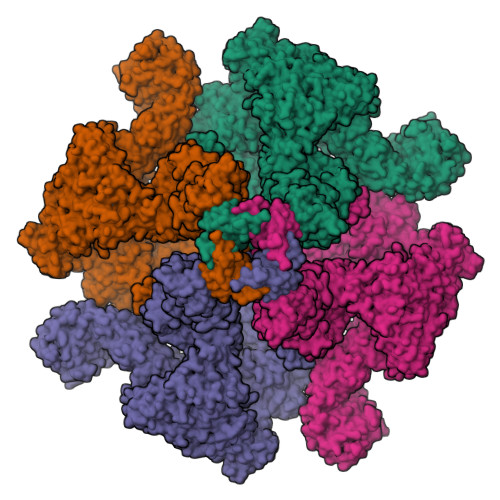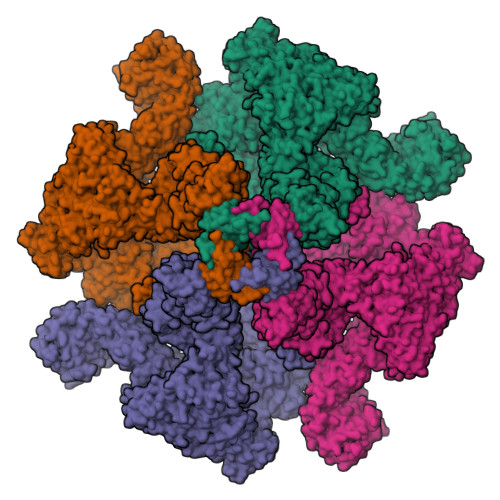Structural titration reveals Ca 2+ -dependent conformational landscape of the IP 3 receptor.
Paknejad, N., Sapuru, V., Hite, R.K.(2023) Nat Commun 14: 6897-6897
- PubMed: 37898605
- DOI: https://doi.org/10.1038/s41467-023-42707-3
- Primary Citation of Related Structures:
8TK8, 8TKD, 8TKE, 8TKF, 8TKG, 8TKH, 8TKI, 8TL9, 8TLA - PubMed Abstract:
Inositol 1,4,5-trisphosphate receptors (IP 3 Rs) are endoplasmic reticulum Ca 2+ channels whose biphasic dependence on cytosolic Ca 2+ gives rise to Ca 2+ oscillations that regulate fertilization, cell division and cell death. Despite the critical roles of IP 3 R-mediated Ca 2+ responses, the structural underpinnings of the biphasic Ca 2+ dependence that underlies Ca 2+ oscillations are incompletely understood. Here, we collect cryo-EM images of an IP 3 R with Ca 2+ concentrations spanning five orders of magnitude. Unbiased image analysis reveals that Ca 2+ binding does not explicitly induce conformational changes but rather biases a complex conformational landscape consisting of resting, preactivated, activated, and inhibited states. Using particle counts as a proxy for relative conformational free energy, we demonstrate that Ca 2+ binding at a high-affinity site allows IP 3 Rs to activate by escaping a low-energy resting state through an ensemble of preactivated states. At high Ca 2+ concentrations, IP 3 Rs preferentially enter an inhibited state stabilized by a second, low-affinity Ca 2+ binding site. Together, these studies provide a mechanistic basis for the biphasic Ca 2+ -dependence of IP 3 R channel activity.
Organizational Affiliation:
Structural Biology Program, Memorial Sloan Kettering Cancer Center, New York, NY, 10065, USA.




















